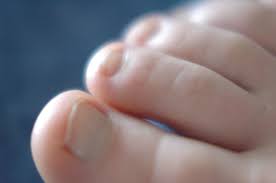Which Little Piggy?

The lead author of the paper, a professor named Nela Cicmil, explained: “People could correctly identify the finger being stimulated in 99 per cent of cases. For the big and little toes, that fell to 94 per cent. But for the middle toes, it was 57, 60 and 79 per cent.” In particular, the study found, we struggle distinguishing between our second and third toes — almost half the test subjects, when their second toe was the one stimulated, would incorrectly say it was the third one.
If that’s weird to you, that’s only because you really don’t spend a lot of time thinking about your toes. The researchers — who do spend a lot of time on such questions — didn’t seem too surprised by those findings. There’s a well-known (but not well-understood) phenomenon known as “agnosia,” which is common in stroke victims; the National Institute of Neurological Disorders and Stroke describes as “an inability to recognize and identify objects or persons.” Dr. Cicmil and team believe that the inability to correctly identify toes is a form of this, although not one which is suggestive of any larger, underlying neurological disorder. (So don’t worry.) For some reason, the human brain just doesn’t care to consistently distinguish between toe number two and toe number three.
There was, however, a part of the study which caught Dr. Cicmil and team off-guard. Not only did many people have trouble distinguishing between one toe and the next, a lot of people also had trouble keeping track of their toes altogether. As Mental Floss reported, “nearly half of the testers reported feeling as if one toe were gone.” That is, a huge percentage of the test group felt like they had only four toes on the foot in question; the fifth one disappeared from their mind’s eye. Dr. Cicmil and team didn’t have an explanation, telling the Oxford University press team that “we do know of medical conditions that can cause people to lose the sense of one of their digits. The people being tested here were healthy, yet some were reporting the feeling of a missing toe.” To reiterate: many of us have a hard time thinking about our toes.
But before you haphazardly joke that the missing toe “went to market,” rest assured that this seemingly silly study has practical value. As Gizmodo noted, Dr. Cicmil’s and team “point out that tests like these can be used to create better tests for brain damage” and that “understanding the kinds of errors healthy humans make can in turn be used to hone the way the results of such tests are processed.”
Related: A fake foot. Uses are unclear.
